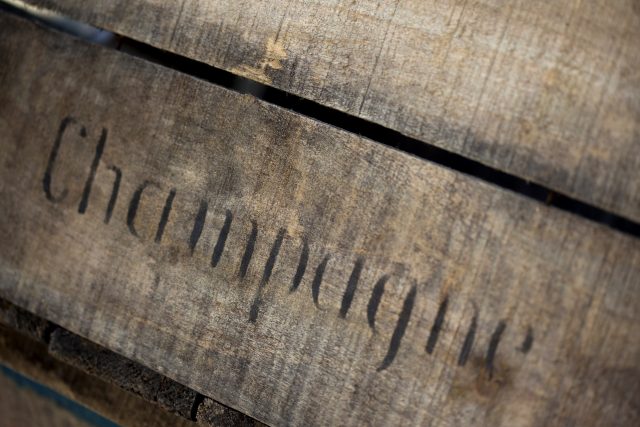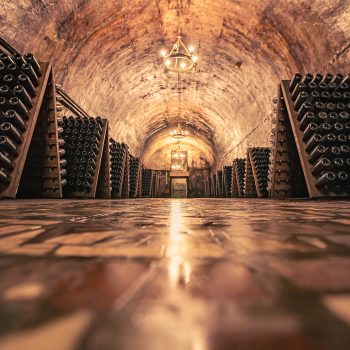Will Champagne’s pursuit of provenance kill the blend?
Champagne’s global success has been built on the power of the blend: different grape varieties, different origins and different harvests, most obviously articulated in the region’s core product, brut non-vintage. But change is in the air – and a number of producers are now embracing provenance, bottling special cuvées that talk more directly about their specific point of origin in the vineyard.

There’s nothing especially new in this as a principle; after all, some of the most sought-after Champagnes, from Salon to Philipponnat’s Clos des Goisses, not to mention the Krug duo of Clos du Mesnil and Clos d’Ambonnay, are expressions of individual crus or vineyards. Meanwhile, grower Champagnes including the likes of Jacques Selosse, Ulysse Collin and Pierre Péters have provenance, almost as much as quality, at the heart of their appeal.
Nonetheless, this movement has expanded in recent years. Le Clos Lanson – the house’s single vineyard cuvée, sourced from the sole remaning one-hectare plot of vines in the city of Reims and launched in 2016 – recently became the second Champagne (after Clos des Goisses) to be sold through La Place de Bordeaux.
Meanwhile, Bollinger’s exploration of Pinot Noir through its PN series of bottlings has reached its third expression, Bollinger PN TX17, focused on the Montagne de Reims cru of Tauxières. Previous bottlings – PN VZ15 and PN VZ16 – have centred on the Grand Cru of Verzenay.
For Bollinger, the exercise is all about Pinot Noir, which deputy chef de cave Denis Bunner describes as “one of the five pillars of the house”. He explains: “This cuvée was created as an exploration of Pinot Noir, which will demonstrate the impact that different crus and different years have on the same grape. Showcasing a main cru and base year with each edition will allow us to highlight the different facets of the Pinot Noir grape.”

If blending is one of the keystones to Champagne’s success, it is also inherent in the history of Champagne Henriot, from the family’s original Pinot Noir vineyards on the northern slopes of the Montagne de Reims to the Chardonnay plots the house later acquired on the Côte des Blancs.
In that sense, the newly-launched Champagne Henriot l’Inattendue (The Unexpected) is well-named: the product of one grape variety (Chardonnay), one village (Avize) and one harvest (2016), it is the house’s first single-village Champagne.
L’Inattendue was born at a tasting of the vins clairs of 2016, during which Henriot president Gilles de Larouzière was so impressed by the quality from Avize that he asked then chef de cave Laurent Fresnet (now with Champagne Mumm) to make a Champagne to highlight its terroir.
Sourced from four plots in the northeast of Avize, it’s a Champagne where vintage and vineyard work in harmony, rather than fighting against each other, with the precision and tension of Avize softened and made more generous by the summer warmth that helped rescue an otherwise difficult year.
While l’Inattendue takes provenance to its logical conclusion with a purist approach to village and vintage, the move towards greater transparency about origin runs deeper in the Champagne region.
Partner Content
Mumm’s new RSRV collection, exclusively Grand Cru, has the concept embedded in its five cuvées, from Mumm RSRV 4.5 (the ‘5’ refers to the crus involved – Verzenay, Aÿ, Bouzy, Cramant, Avize) to Mumm RSRV Blanc de Blancs, which is 100% sourced from Cramant (and is the heir to Mumm de Cramant). Meanwhile, Mumm RSRV Blanc de Noirs is a single vintage (currently 2013) wine from Verzenay, where George Hermann Mumm acquired his first plot of vines during the 1870s.
A Mumm spokesperson emphasises that wines such as Mumm de Cramant and Mumm de Verzenay are “some of the oldest cuvées in the house’s history”, but adds: “It is true that, for a long time, Champagne has only been communicating about blending in general, not talking about specific crus or regions.
“But those cuvées have always existed, more reserved for friends of the houses or really exclusive distribution. Today, as a way to express houses’ singularities, we tend to communicate more about those cuvées and push them more to general audiences.”
For Matthew O’Connell, CEO of LiveTrade at Bordeaux Index, single vineyard cuvées are just one part of a larger-scale movement in Champagne, including Krug’s shift to Grande Cuvée ‘Editions’, Cristal’s viticultural exploration of biodynamics and the Bollinger PN releases.
“The wine market today is an interesting combination of being brand-focused and detail-focused, more so on both fronts than in the past,” O’Connell says. “Larger Champagne producers have wrestled with the two aspects over time: disgorgement dates, details of the cépage, the winemaking, now viticulture also; and they have yielded more and more for the benefit and interest of luxury consumers.
“I see the trend as very much satisfying consumer demand/interest, rather than for example to ‘claw back’ demand from grower Champagne, as really that is a much smaller segment, often seen as very distinct from the Grande Marque space.”
To which we might add that old blending habits die hard. Bollinger’s PN releases, after all, are not single vintage, or even single cru. The blend for Bollinger PN TX17 is dominated by Tauxières, but Verzenay and Avenay are also in there, along with 20%-plus of reserve wines dating back to 2006.
“Whilst each release in the collection is designed to express the character of Pinot Noir from a specific year and vintage, the intention was never to make a single vineyard vintage wine,” explains Bunner. “Each edition of the blend has its own distinct character, expressing the various facets and terroirs of Pinot Noir in Champagne.”
He adds: “These [reserve] wines are chosen to act in aromatic synergy with the cru and year showcased in each edition. As a result, each year the finished cuvée is able to express the distinct complexities of the terroir and vintage year, whilst at the same time maintaining the unique Bollinger style.”
In a world of detail-curious consumers, provenance is an increasingly important and influential concept for the Champenois, spawning a succession of releases that talk loudly and openly about where they’re from, and how they’re made. But blending is still an essential part of Champagne’s DNA – and that’s not going to change in a hurry.
Related news
Strong peak trading to boost Naked Wines' year profitability




